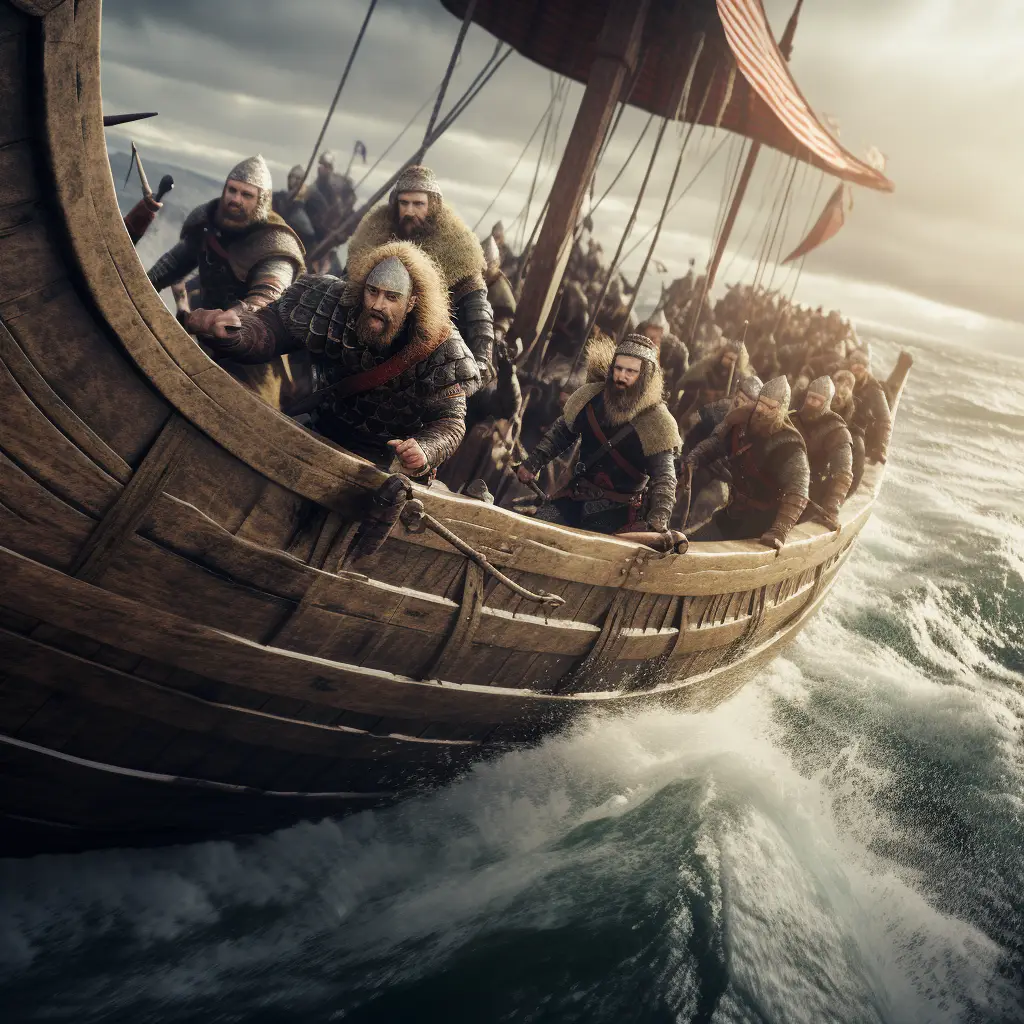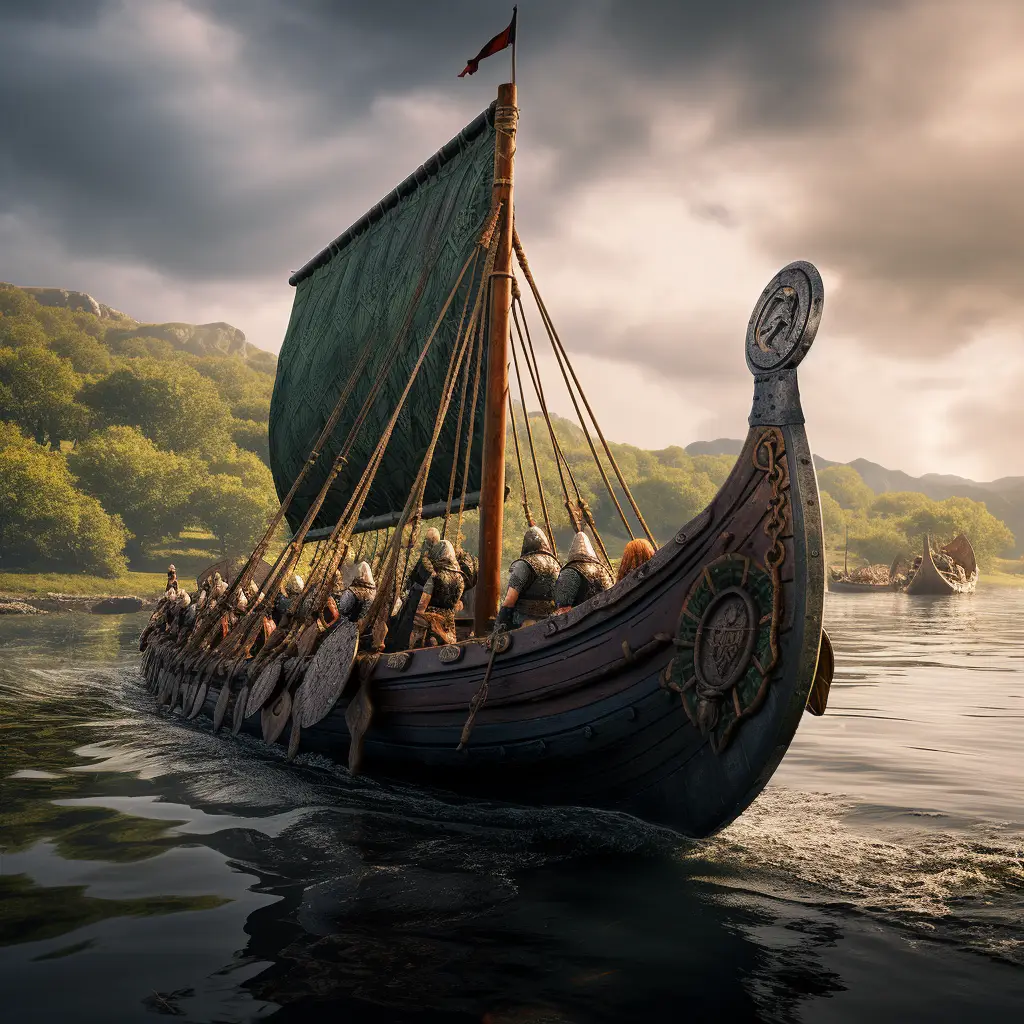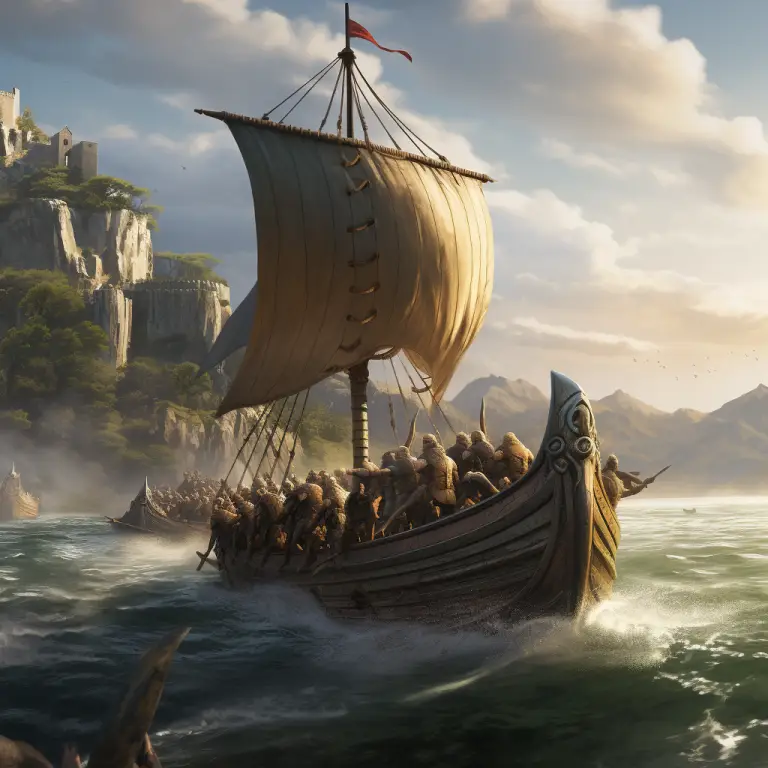Viking ships, particularly the longship (or longboat) and the knarr, were instrumental in the success of Viking exploration, trade, and raiding during the Viking Age. Here’s an overview of Viking ships:
Longship (Langskip): The longship was the most iconic vessel of the Vikings. It was long, narrow, and shallow-drafted, designed for both rowing and sailing. Longships typically had a single mast with a square sail, but they could also be propelled by oars, making them versatile for navigating both open seas and inland waterways. These ships were sleek, fast, and highly manoeuvrable, allowing Vikings to undertake long-distance journeys and execute surprise attacks.
Knarr: The knarr was a broader and sturdier type of ship used primarily for cargo transport and trade. Unlike the longship, which was built for speed and raiding, the knarr had a more rounded hull and a greater cargo capacity. Knarrs were essential for carrying goods like timber, livestock, and other commodities, enabling Viking trade networks to extend across vast distances.
The primary purpose of knarrs was to transport cargo over longer distances. They were crucial for the Vikings’ trading activities, enabling them to establish and maintain trade routes across the North Atlantic, the Baltic Sea, and beyond.
Knarrs were primarily propelled by sails, and their design prioritized stability over speed. They were less manoeuvrable than longships, but capable of carrying substantial cargo.
Trade Routes: Knarrs played a significant role in the Vikings’ ability to engage in long-distance trade, connecting Scandinavia with other parts of Europe, the British Isles, and even as far as the Middle East.
Construction: Viking ships were typically constructed using overlapping planks (clinker-built) and were fastened together with iron rivets or clench nails. They were designed to be lightweight yet sturdy, allowing them to withstand the rigours of both open sea voyages and navigating shallow rivers.
Navigation: Viking ships were equipped with simple navigational aids such as sunstones, which could help determine the position of the sun even on cloudy days, and by observing natural landmarks like stars, coastlines, and bird migrations. The Vikings were skilled navigators who relied on their knowledge of winds, currents, and tides to navigate the seas.
Warfare: Longships played a crucial role in Viking warfare, allowing for swift and stealthy attacks along coastlines and river ways. Their shallow draft enabled them to navigate shallow waters and even land on beaches, making them formidable weapons of war.
Cultural Significance: Viking ships were not only practical vessels but also held significant cultural and symbolic value for the Norse people. They were a symbol of Viking ingenuity, craftsmanship, and adventurous spirit, and their depictions in Norse mythology and artwork reflect their central role in Viking culture.
Overall, Viking ships were marvels of engineering that enabled the Vikings to explore, trade, raid, and establish settlements across vast distances, leaving a lasting legacy in the annals of maritime history.


